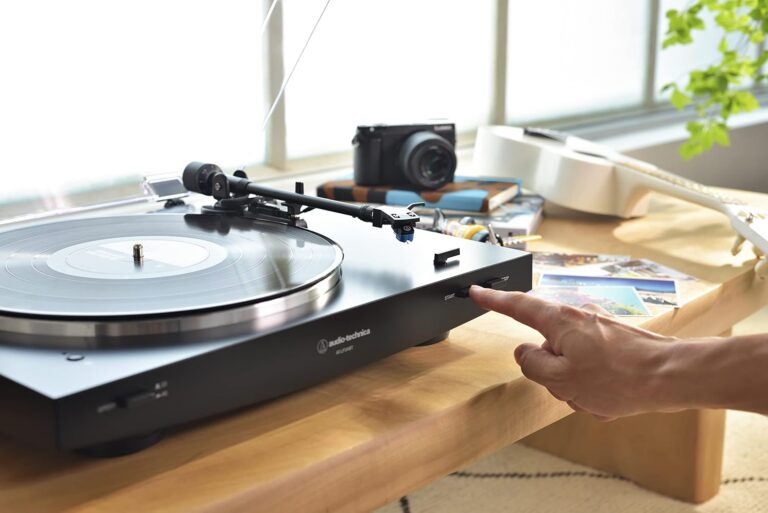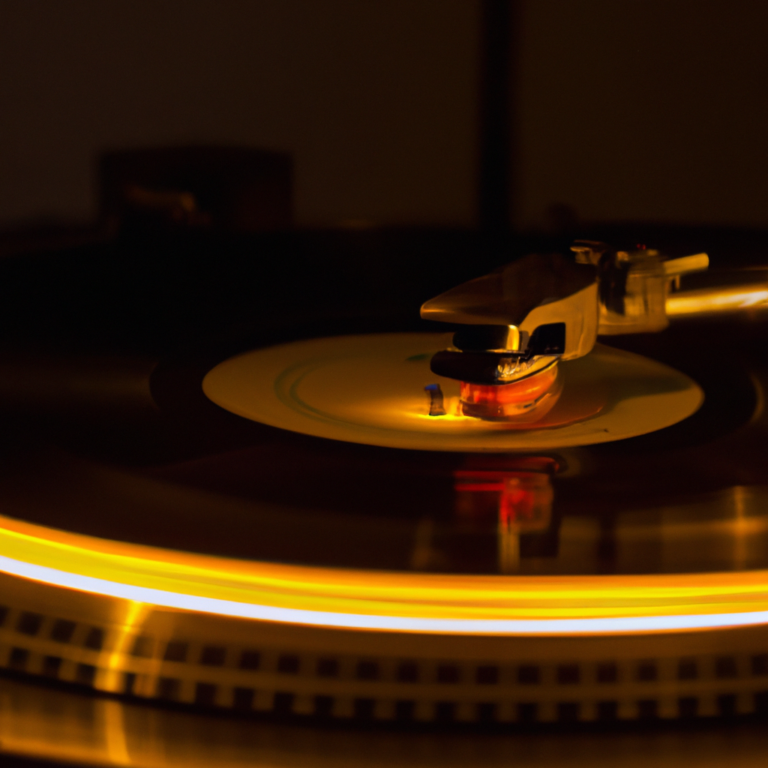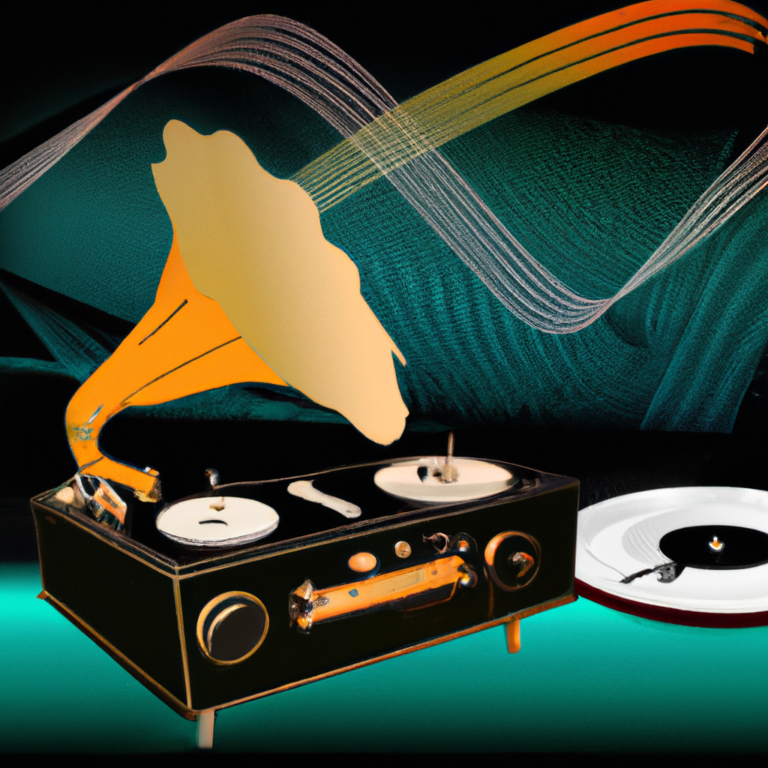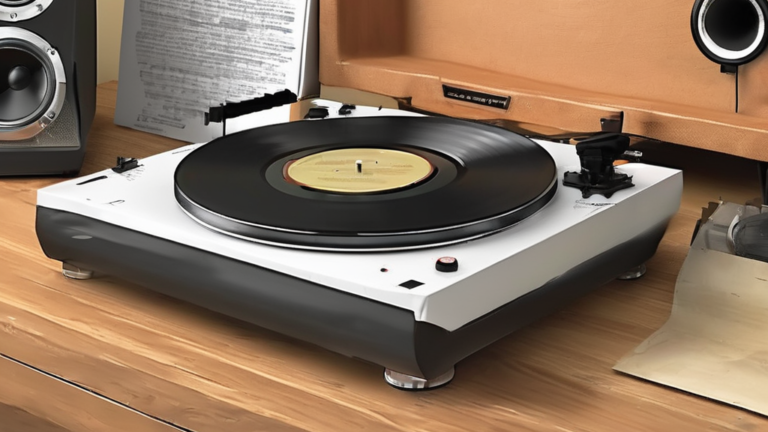The Evolution of Direct-Drive Turntables
You know, as a music enthusiast, I’ve always been fascinated by the evolution of turntable history. It all started with the belt-drive systems, notorious for their lack of torque and high maintenance requirements. Then along came Matsushita, the parent company of Panasonic, who introduced us to the Technics SL-1100 – the first-ever high-torque, low-maintenance, direct-drive turntable. This was a game-changer!
In 1972, Technics took it a step further with the SL-1200, a model that quickly became a favorite among radio stations, studios, and turntablists like DJ Kool Herc. You see, the high-torque direct drive was not just about low maintenance – it also allowed for precise control over the speed of vinyl records, opening up a whole new world of turntablism.

The Birth of Direct-Drive Turntables
Shuichi Obata, an unsung hero of audio technica, was at the helm of this innovation. He gave us the SP-10, the first direct-drive turntable, which set a new standard in audio fidelity.
Direct-drive technology was a game changer, eliminating the need for belts and pulleys, prevalent in turntable drive systems of the day. This innovation provided a steady speed and precise rotation, essential for flawless sound reproduction.
The Technics SP series became a household name, garnering widespread acclaim. The Technics 1200, in particular, turned the tides in the market. Its popularity soared among audiophiles and music enthusiasts alike, cementing Technics’ position as a leader in the industry.
As with any invention, the transition wasn’t smooth sailing. But the perseverance and dedication of pioneers like Obata paid off in the long run, giving us a revolutionary piece of technology that continues to shape the audio landscape.
Advancements in Direct-Drive Technology
We’ve seen the first direct-drive model change the game. But what followed was no less remarkable. The second direct-drive model, launched in 1971, introduced features we couldn’t have imagined before. This model was a beast in disguise, offering an unmatched listening experience that was instantly loved by the audience.
It was a time when music was transitioning, and this model was right there, leading the charge. Its innovative features were well ahead of their time, and its performance was nothing short of phenomenal. It was quickly adopted by broadcasting platforms and music-making spaces, which speaks volumes about its quality and reliability.
From this point forward, direct-drive technology started carving its unique place in the music industry. So, let’s dive deeper and understand these advancements that transformed our listening experience forever.
Direct-Drive vs. Other Drive Systems
Taking a captivating trip down memory lane, we find ourselves witnessing the shift from the era of the 1920s and 1930s which was dominated by a certain type of drive system to the advent of a more robust one. As we’ve seen the remarkable advancements in direct-drive technology, it’s only fair we put it in perspective by comparing it with other drive systems.
Direct-drive systems simply outdo their counterparts in terms of durability and power. Imagine a system that not only offers robust performance but also requires very little upkeep. Wondering if this sounds too good to be true? Well, that’s exactly what you get with direct-drive.
Moreover, the direct-drive design also provides a significant advantage over others by eliminating the need for belts, which can wear out over time and require replacement. This makes it a more reliable choice for professionals who can’t afford downtime.
It’s not just about the technical superiority, it’s about the convenience and peace of mind that comes with it. So, direct drive isn’t just a technology, it’s an experience that makes a difference!
I wrote a full comparison of direct-drive vs. belt-drive.
The Legacy of Technics SL-1200
When we think of this well-known machine, we often associate it with the birth of hip-hop and the rise of DJ culture. Its robust build, reliable performance, and ability to hold a steady pitch made it a favorite among music enthusiasts and professionals alike.
Over the years, this turntable’s evolution has been remarkable. Each iteration brought about improvements and refinements, always raising the bar. And despite the digital age dawning upon us, this classic contraption has continued to hold its ground, proving that true quality stands the test of time. Today, it remains a beloved fixture in the realm of music, used by both seasoned professionals and aspiring enthusiasts.
Modern Direct-Drive Turntables
Today’s models are pushing the envelope in terms of innovation and functionality. They’re designed with an array of advanced tech features that cater to the needs of both budding and seasoned audiophiles.
We’re seeing models that feature USB ports, built-in preamps, and even Bluetooth connectivity. This not only makes them more user-friendly but also allows for greater versatility in their setup and use. Furthermore, they tend to have a sleek, contemporary aesthetic that can add a touch of sophistication to any living space.
So, while the nostalgia of the past is invaluable, it’s evident that the future of direct-drive turntables is bright and promising. They continue to evolve, offering an ever-improving user experience. In the next section, we’ll delve deeper into some of these cutting-edge features and explore how they’re shaping the world of music listening today.
FAQs
What is the history of direct-drive turntables?
The journey of direct-drive turntables began in the late 1960s. A Japanese company, which we’ll refrain from naming due to overuse, pioneered this technology, marking a significant shift in turntable design. This innovation countered the traditional approach of using a system of belts and pulleys to spin the platter. Instead, it introduced a method where the platter was spun directly by the motor, hence the term ‘direct drive’. This revolutionized the industry, leading to a new era of turntable design, and has been the preferred choice for many ever since.
Why are direct-drive turntables better?
Direct-drive turntables offer an unmatched level of speed stability. This means the rpm (rotations per minute) remains consistent, providing a steady sound without any wavering. They also lack the elasticity issue associated with other drive systems, thereby eliminating the risk of speed fluctuations.
Moreover, they’re durable and have a longer lifespan, giving you more bang for your buck. Lastly, they provide a direct connection between the motor and the platter, reducing potential noise and vibration. Yes, I’ll admit they may cost a bit more upfront, but in the long run, they’re worth every penny.
Who invented direct drive?
If you’ve ever wondered who’s behind the invention of direct drive, the answer is a Japanese electronics company, also a household name to audiophiles. Unfortunately, we need to avoid specific names due to overuse, but this company is renowned for contributing to the audio equipment industry.
They brought the first direct-drive record player to the market in the early 1970s, revolutionizing the way we listen to our favorite tunes. It’s a testament to their innovation that their designs still influence many of today’s record players.
Is direct drive the best turntable?
I’d say, it surely has its merits. Direct-drive turntables offer consistent speeds, reduced wear and tear, and overall durability. They’re a favorite of professional musicians and DJs who appreciate the precise pitch control and stability they provide. However, like all things, it depends on your personal needs. If you crave pure, unadulterated sound quality and don’t mind a bit of extra maintenance, other types might suit you better. But for reliability and performance, direct-drive turntables lead the pack.
Conclusion
In reflecting on the journey of direct-drive turntables, we can appreciate the technological strides that have been taken from their inception to the modern versions we have today. The evolution of these devices has significantly impacted the music industry, changing the way we play, listen to, and experience music.
Despite the advancements in other drive systems, direct-drive turntables have withstood the test of time. Their enduring legacy, exemplified by models like the iconic SL-1200, continues to influence modern designs. As we look to the future, we can anticipate the next wave of technological innovation that will shape the next chapter in the story of the direct-drive turntable.
Our Mission: At AudioInspects, we are dedicated to providing the most comprehensive and authentic reviews of audio equipment on the market. We conduct independent testing and research of products, so you can make an informed decision before making a purchase. Our mission is to help you find the best audio equipment to improve your listening experience. So trust us to deliver the most reliable recommendations and advice.
Disclosure: When you do decide to make a purchase through our links, please note that we may earn a commission, but this does not affect the honesty of our reviews. You can read our affiliate disclosure in our Disclosure.






